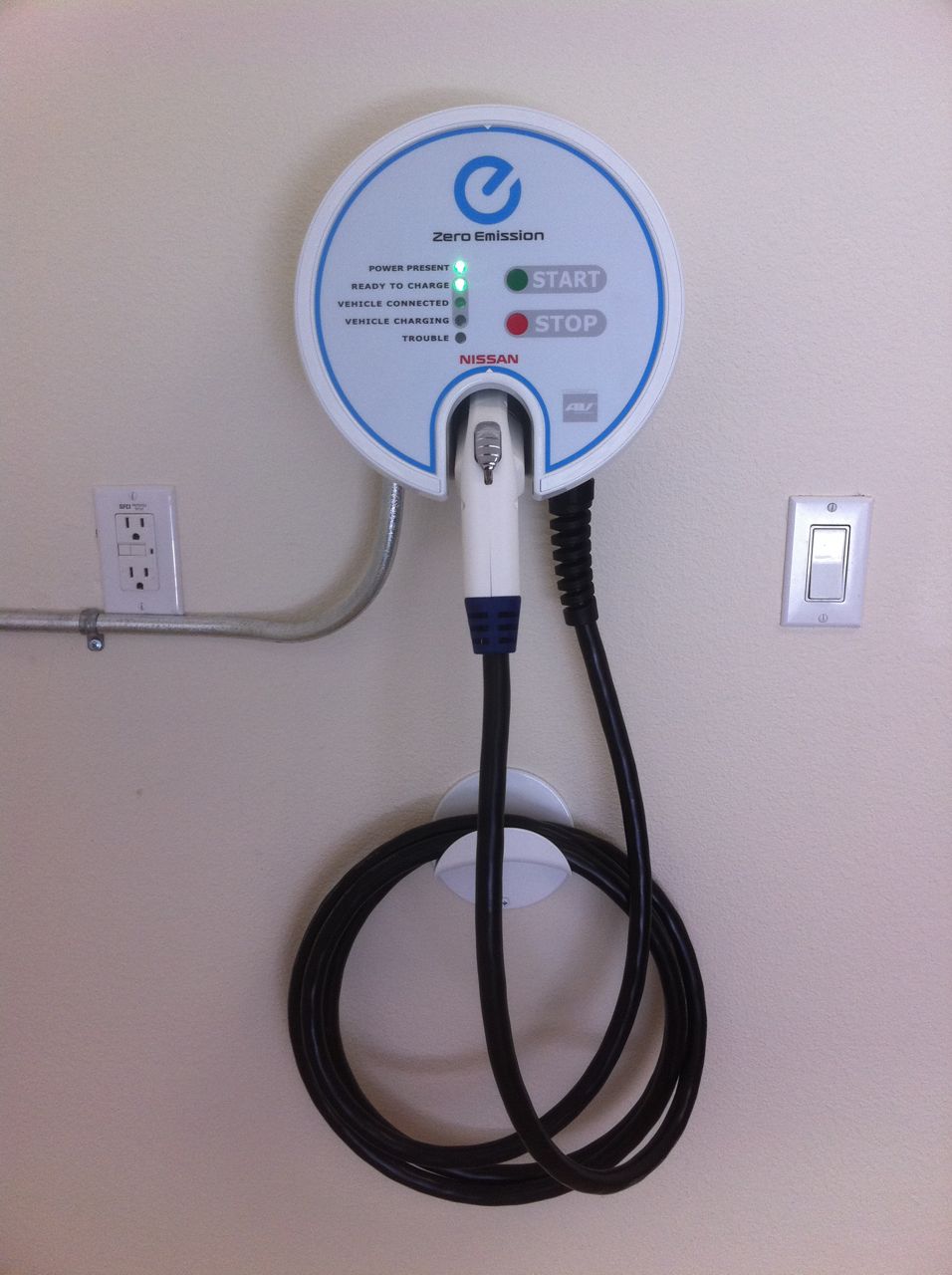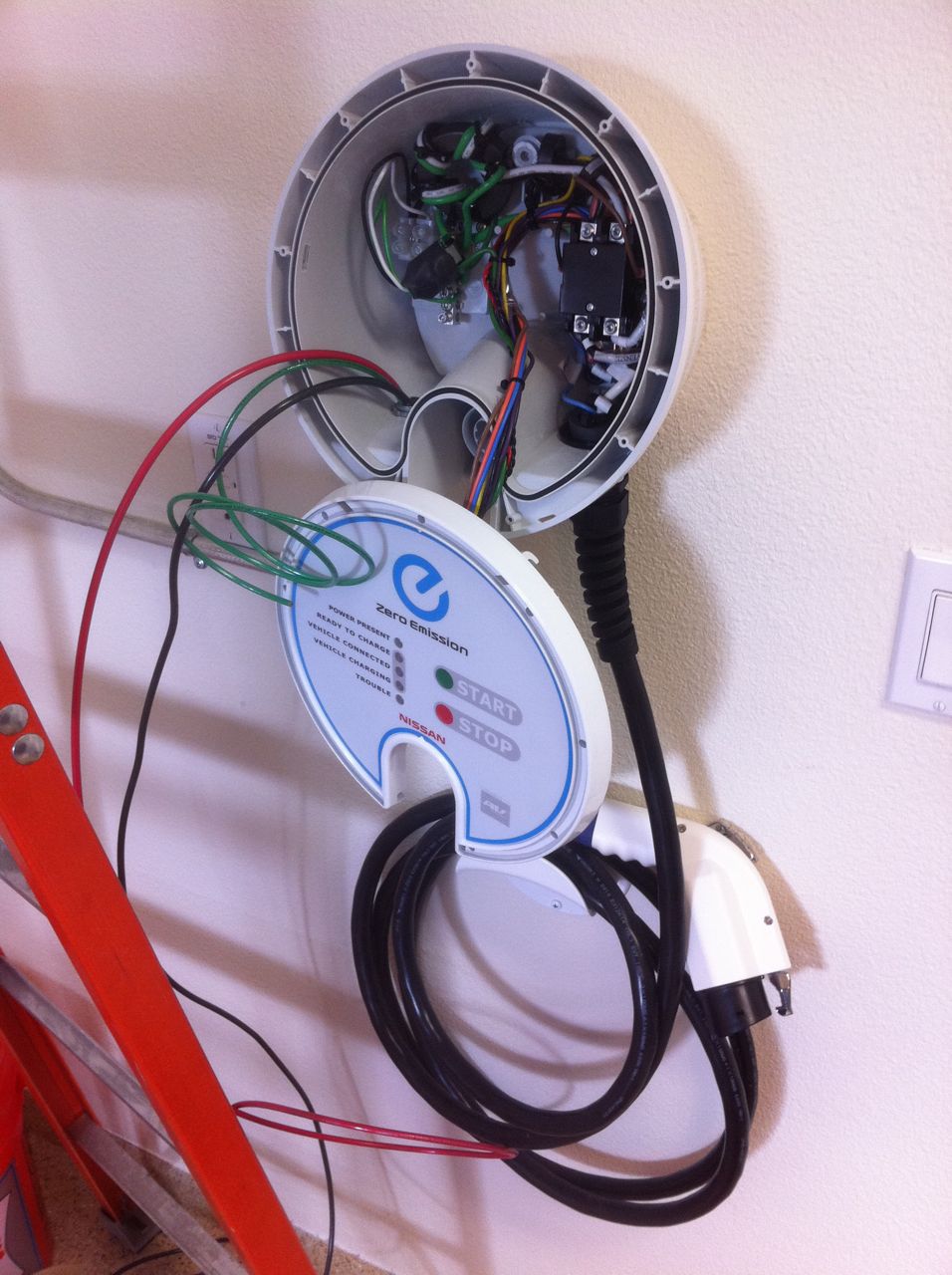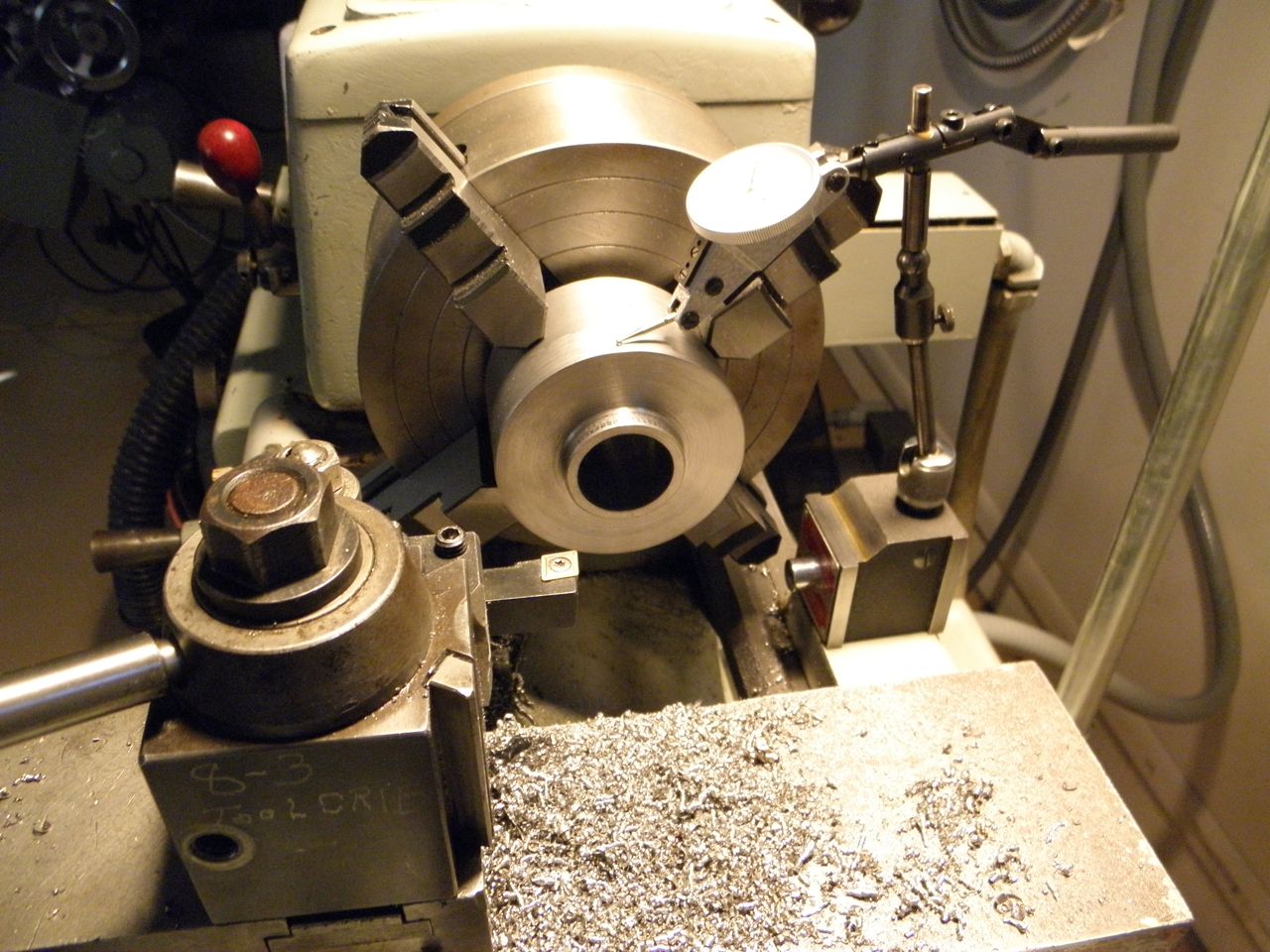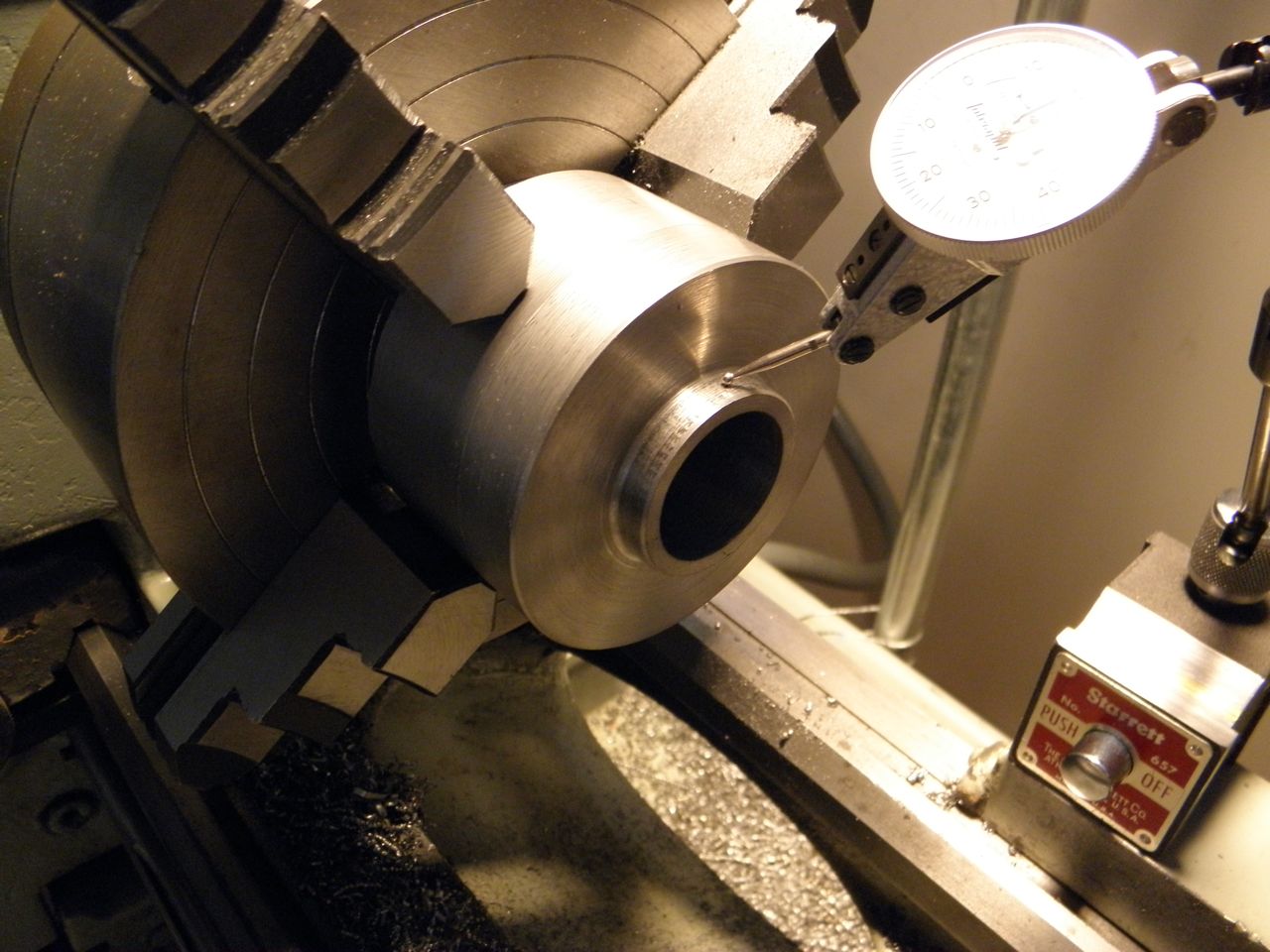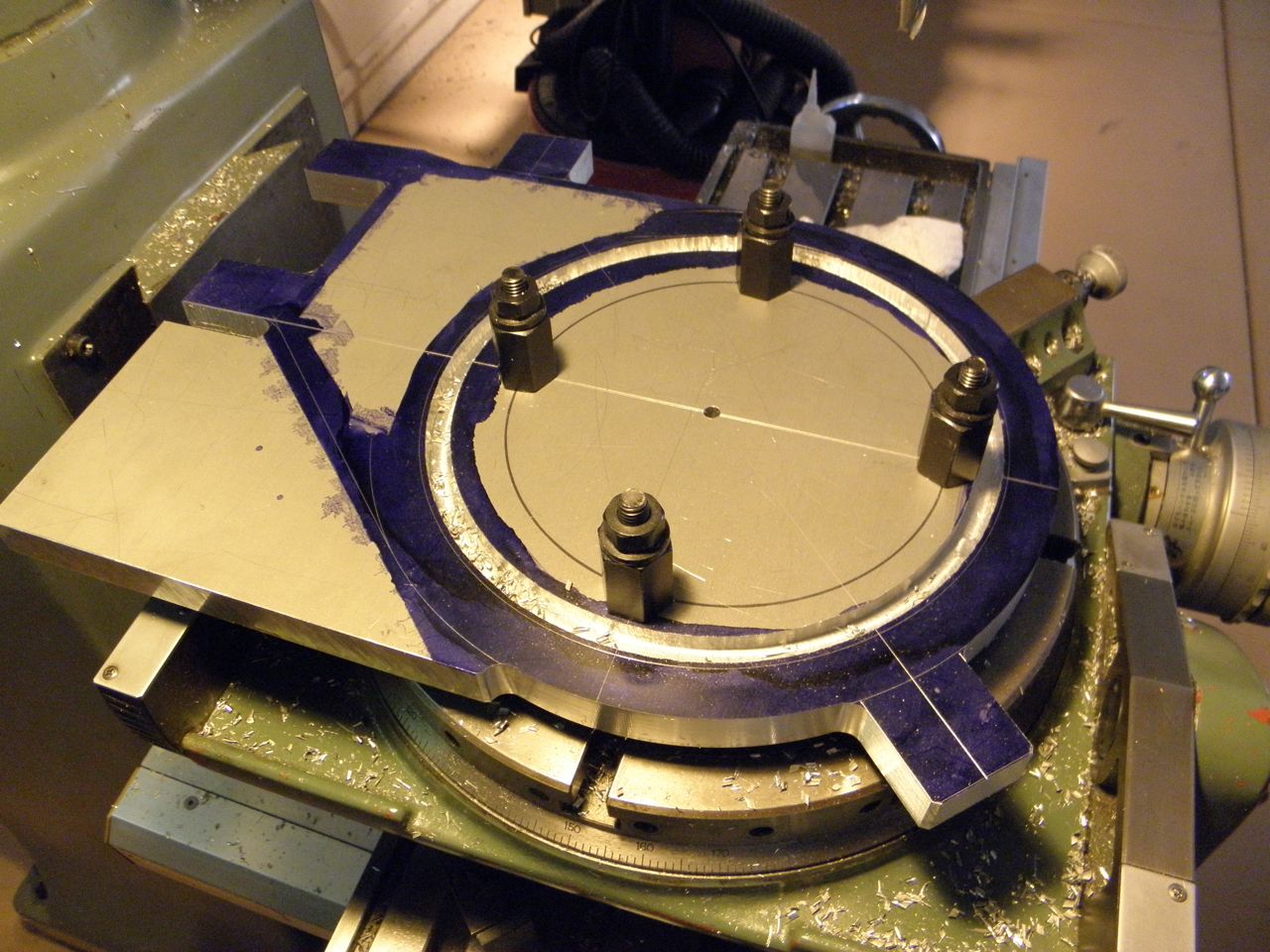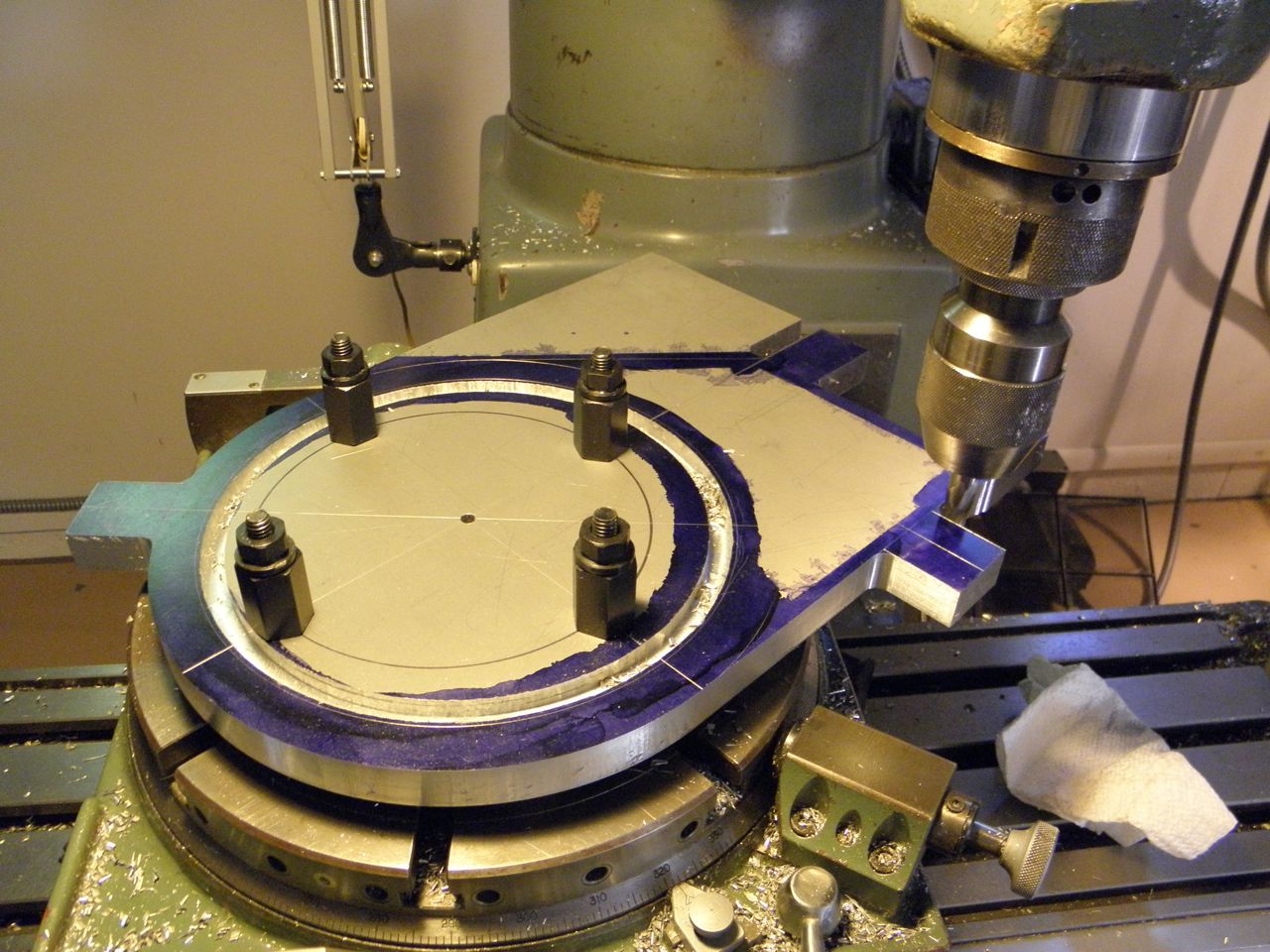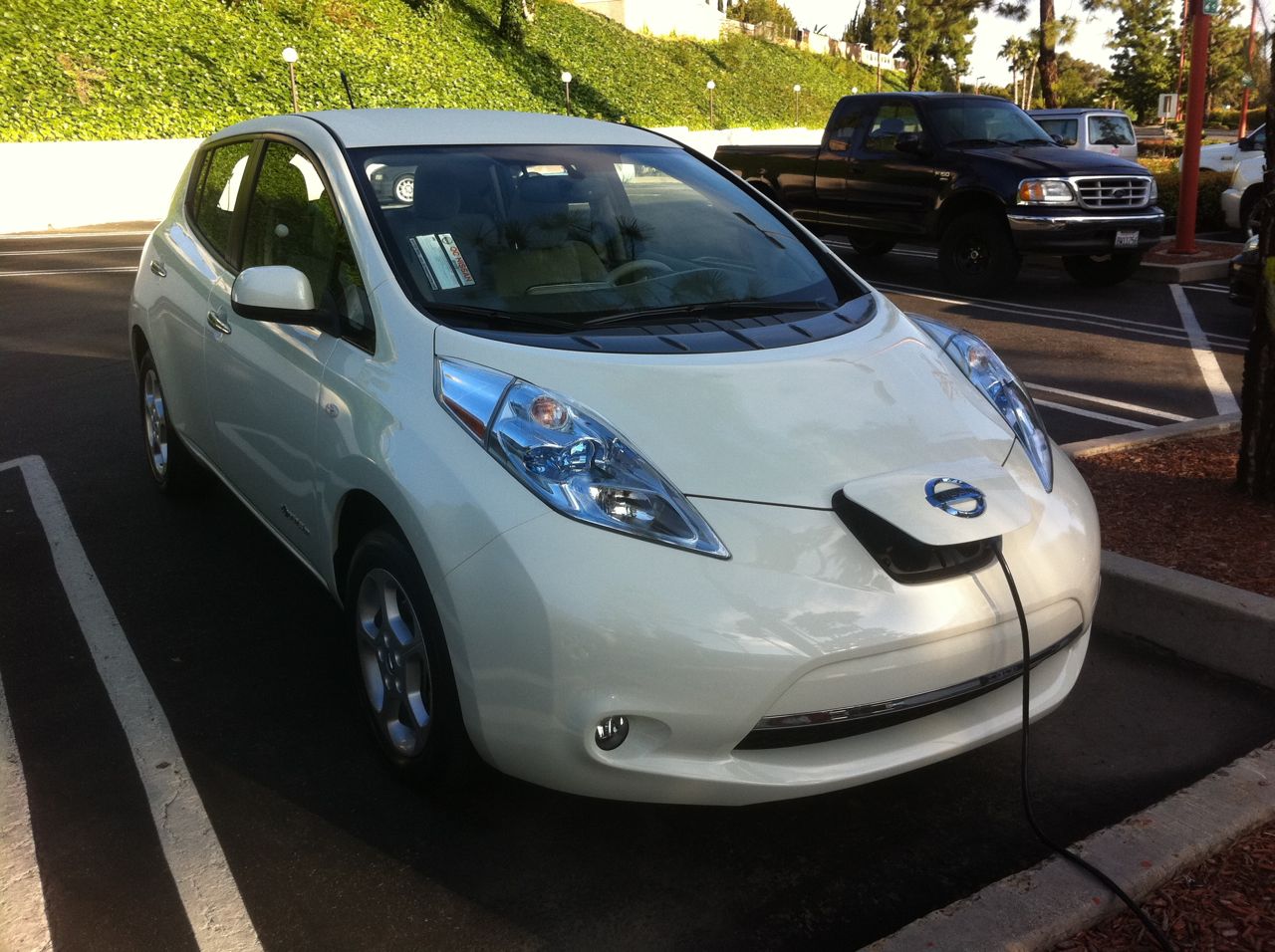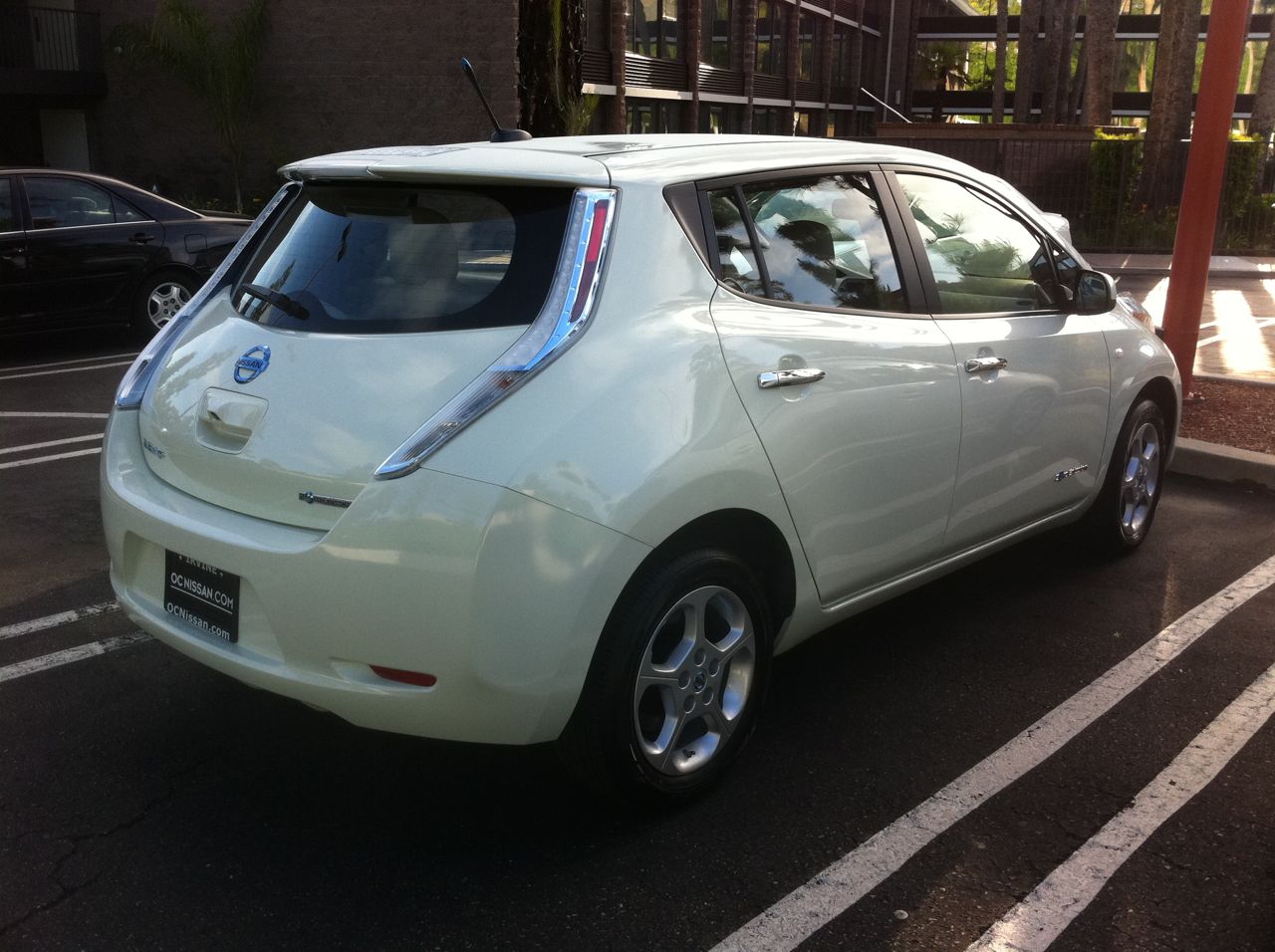Here's a look at the final aft-motor mount being test fit to the Warp9. This assembly went through a similar test fit about a month ago where we found some issues with the diameter of the circular portion surrounding the motor. After some alterations, here is the result:
 The cradle portion seen above and below is two-part construction. A top and bottom piece surround the motor with 3 bolts securing the halves together. The blue surface seen in the photos is a marking fluid used during layout and machining (seen previous posts for more info) and is temporary. Below is a photo that shows the bolt locations clearly:
The cradle portion seen above and below is two-part construction. A top and bottom piece surround the motor with 3 bolts securing the halves together. The blue surface seen in the photos is a marking fluid used during layout and machining (seen previous posts for more info) and is temporary. Below is a photo that shows the bolt locations clearly:
 Above you can see the third piece of the aft-mount equation. This part mates the upper half of the cradle with the OEM passenger-side motor mount already in the car. The three holes are used to bolt this entire assembly to that mount and take advantage of the original soft mount design that supported the gas engine.
Above you can see the third piece of the aft-mount equation. This part mates the upper half of the cradle with the OEM passenger-side motor mount already in the car. The three holes are used to bolt this entire assembly to that mount and take advantage of the original soft mount design that supported the gas engine. Lastly, here's a look at the mount in the car (without the motor in it). I quickly and loosely bolted everything up one last time just to confirm alignment and fit. It looks like we're in business.
Lastly, here's a look at the mount in the car (without the motor in it). I quickly and loosely bolted everything up one last time just to confirm alignment and fit. It looks like we're in business.










